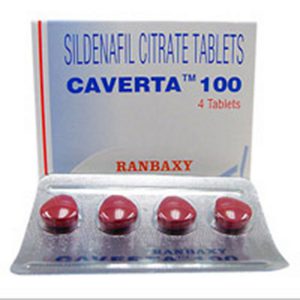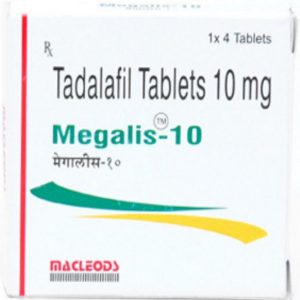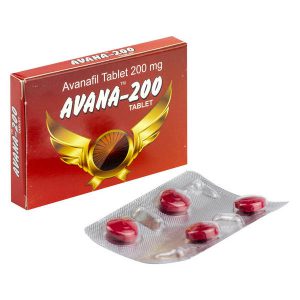Píldoras para la disfunción eréctil a la venta online, en España sin receta
En nuestra farmacia para la disfunción eréctil addvantagemedia.com, puede comprar pastillas para la disfunción eréctil en línea sin receta médica. Durante más de 3 años, hemos estado ofreciendo más de 150 productos de salud sexual para hombres y mujeres para mejorar su vida íntima en el dormitorio. Nuestros medicamentos contienen ingredientes activos que mejoran la resistencia sexual sin dañar su salud.
Los expertos han evaluado y autorizado profesionalmente todos nuestros medicamentos para la disfunción eréctil para garantizar la mayor calidad y eficacia.
¡Compre pastillas para la DE en línea desde la comodidad de su hogar en España! Sin duda le ayudaremos a elegir el producto que más se adapte a sus necesidades.
La mejor tienda para Viagra, Cialis, Levitra, Spedra y Kamagra genéricos, y otras píldoras para la DE en línea
Haz tu pedido hoy, y disfruta de un sinfín de momentos de intimidad.
| ● Entrega rápida y discreta en toda España en 7-15 días. | ● Píldoras 100% legítimas para la disfunción eréctil y potenciadores sexuales directamente de los fabricantes originales.
|
● ¡No se requiere receta médica para ordenar!
|
| ● Pague con tarjeta de crédito o con transferencias de dinero discretas. También aceptamos pagos con criptomonedas.
|
● Consultas directas con nuestro equipo de expertos sin costo adicional, los siete días de la semana, las 24 horas del día.
|
● Reenvío gratuito garantizado si su pedido no llega o no está satisfecho.
|
¡No tarde, ordene píldoras para le DE hoy!
| ● ¡La confidencialidad de sus datos de registro, así como el anonimato de su pedido, están garantizados!
|
● Distribuidor autorizado de marcas de Disfunción Eréctil vendidas a bajo precio en España.
|
● Ofertas especiales para clientes regulares, mayoristas y minoristas.
|
Las píldoras para la DE más eficaces para la salud sexual, a la venta en España
Las pastillas para tratar la disfunción eréctil (DE) se llaman inhibidores de la PDE-5. Has oído hablar de Viagra (Sildenafil) y Viagra Connect, pero hay una gran cantidad de opciones adicionales, como Levitra (Vardenafil), Cialis (Tadalafil) y Spedra (Avanafil). Todos funcionan de la misma manera, pero el ingrediente activo de la píldora determina los efectos y para quién son más adecuados.
Estas son las sustancias más populares que se utilizan para mejorar la salud sexual:
SILDENAFIL (VIAGRA GENÉRICO)
Las píldoras de Sildenafil contienen la misma sustancia inhibidora de la PDE-5 que la Viagra, el remedio para la disfunción eréctil más popular y uno de los medicamentos más efectivos para restaurar la potencia natural en el mundo.
Sildenafil por lo general funciona en 30 a 60 minutos y durante hasta 12 horas, se considera el tratamiento de salud sexual más efectivo para la disfunción eréctil (74 % de efectividad).
-
€19.00
Aurogra 100 mg
-
€25.50
Caverta 100 mg
-
€14.90
Caverta 50 mg
-
€10.40
Cenforce 100 mg
-
€10.20
Cenforce 150 mg
TADALAFIL (CIALIS GENÉRICO)
Las píldoras de Tadalafil contienen la misma sustancia inhibidora de la PDE-5 que Cialis, el fármaco más nuevo y poderoso para aumentar la potencia y uno de los mejores remedios para los problemas de Farmacia Espana impotencia sexual y el tratamiento de la disfunción eréctil en los hombres.
Tadalafil tiene una efectividad del 60 al 70 % y se considera el tratamiento de salud sexual para la disfunción eréctil de acción más rápida, ya que generalmente funciona en 15 a 30 minutos y dura hasta 36 horas.
-
€28.00
Apcalis SX Oral Jelly 20mg
-
€13.50
ELI 20 mg
-
€25.50
Forzest 20 mg
-
€20.00
Megalis 10 mg
-
€25.50
Megalis 20 mg
VARDENAFIL (LEVITRA GENÉRICO)
Las píldoras de Vardenafil son un medicamento para la disfunción eréctil de alta calidad y con una alta velocidad de acción. Este nuevo tratamiento de salud sexual para la disfunción eréctil masculina contiene la misma sustancia inhibidora de la PDE-5 que Levitra y tiene la menor cantidad de efectos secundarios informados.
Vardenafil se considera un tratamiento de salud sexual de acción rápida, ya que generalmente funciona en 30 minutos y la duración es de 12 horas (y en algunos casos, mucho más).
-
€25.50
Filitra 20 mg
-
€20.00
Filitra Professional
-
€20.00
Lovevitra 60 mg
-
€40.10
Snovitra 20 mg
-
€17.00
Snovitra Pro Tab
ÚLTIMAS PUBLICACIONES DE BLOG
Publicaciones acerca de la disfunción eréctil y los fármacos para su tratamiento. Millones de hombres luchan contra la impotencia, estas son los medicamentos disponibles para sobrellevarla.
La disfunción eréctil puede ser difícil de tratar para los hombres. Discutimos los beneficios y los efectos positivos que los medicamentos genéricos para la salud sexual pueden tener en el cuerpo masculino a medida que más hombres acuden a nosotros con este problema.
-
21Jun
¿Qué medicamento para la disfunción eréctil?
At vero eos et accusamus et iusto odio dignissimos ducimus qui blanditiis
-
21Jun
¿Los tratamientos de venta libre para la disfunción eréctil funcionan?
At vero eos et accusamus et iusto odio dignissimos ducimus qui blanditiis
-
25Jun
¿Cuáles son las alternativas a viagra?
At vero eos et accusamus et iusto odio dignissimos ducimus qui blanditiis
AVANAFIL
Avanafil es el último de los inhibidores de la PDE-5 en ser desarrollado. Este potente y altamente selectivo inhibidor reversible de la PDE5 (la sustancia de Spedra) tiene un número mínimo de efectos secundarios y una acción rápida.
Por lo general, funciona en 15 a 30 minutos y dura hasta 4 horas.
-
€50.10
Avana 100 mg
-
€29.50
Avana 200 mg Tab
-
€25.50
Avana 50 mg
-
€64.20
Extra Super Avana
-
€39.00
Super Avana
PAQUETES DE PÍLDORAS PARA LA DE
Pastillas y jaleas orales genéricas para la disfunción eréctil que son asequibles y de alta calidad están disponibles para su compra en línea en addvantagemedia.com en España sin necesidad de receta médica.
DAPOXETINA
La Dapoxetina pertenece a la categoría de ``prolongadores``, cuyo objetivo es prolongar las relaciones sexuales al prevenir la eyaculación precoz, que con frecuencia es producida por el uso de esteroides anabólicos.
No reduce las sensaciones durante las relaciones sexuales, pero puede aumentar significativamente su duración.
-
€50.10
Duratia 90 mg
-
€35.00
Extra Super P Force
-
€26.00
Poxet 60 mg
-
€14.90
Suhagra Force 50 mg
-
€30.00
Super Zhewitra
MARCAS DE PÍLDORAS PARA LA DE 100% AUTÉNTICAS
Nos preocupamos por que nuestros clientes obtengan productos para la disfunción eréctil de alta calidad en España y hacemos todo lo posible para obtener los mejores tratamientos para la disfunción eréctil directamente de los fabricantes farmacéuticos más reputados del mundo. Nunca tendrá que preocuparse por recibir productos de calidad cuestionable en línea, ya que todos nuestros productos de salud sexual para la disfunción eréctil incluyen códigos de serie únicos que se pueden verificar como 100 % legítimos directamente con el fabricante original.
PREGUNTAS COMUNES ACERCA DE LOS TRATAMIENTOS PARA LA DISFUNCIÓN ERÉCTIL
Debido a lo común que es la disfunción eréctil, los medicamentos que aumentan la potencia son cada vez más populares entre los culturistas que toman esteroides anabólicos orales o inyectables, ya que interfieren con la capacidad del cuerpo para producir testosterona.
¿COMO FUNCIONAN LAS PÍLDORAS PARA LA DISFUNCIÓN ERÉCTIL?
Los inhibidores de la fosfodiesterasa tipo 5 (PDE-5) contenidos en estas píldoras para la disfunción eréctil funcionan al relajar los vasos sanguíneos para que aumente el flujo de sangre al pene, lo que ayuda a lograr y mantener una erección.
Debido al aumento de óxido nítrico, que ayuda a que los vasos sanguíneos aumenten de tamaño (dilaten), pasa más sangre al pene, lo que trae consigo una erección.
¿A QUE SE DEBE LA DISFUNCIÓN ERÉCTIL?
Diferentes factores pueden causar disfunción eréctil (DE). En algunos casos, es su estado mental y emocional (por ejemplo, depresión, ansiedad, estrés, dificultades en las relaciones, etc.).
En otros, pueden ser factores físicos como fumar, tener sobrepeso, efectos secundarios de medicamentos específicos o una condición de salud como cambios en los niveles hormonales, presión arterial alta, colesterol, diabetes, enfermedades cardíacas, lesiones, etc.
¿CUAL ES LA DIFERENCIA DE EFECTOS ENTRE LAS PÍLDORAS PARA LA DISFUNCIÓN ERÉCTIL DE MARCA Y LAS GENÉRICAS?
La medicina moderna ha desarrollado medicamentos genéricos para la disfunción eréctil con composiciones casi idénticas a Viagra, Cialis y Levitra. Sin embargo, son mucho más asequibles y están disponibles en forma genérica en nuestra farmacia en línea en España.
Se componen de los mismos ingredientes activos y, sobre todo, tienen los mismos efectos potentes sobre el rendimiento sexual masculino que sus originales, estos son los siguientes:
- El tratamiento de una erección débil y la mejora de su recuperación después de la relación sexual;
- Aumento de la duración de las relaciones sexuales con una duración de sus efectos superior a 4 horas;
- El tratamiento de la impotencia;
- Prevención de la eyaculación precoz;
- Aumento de la libido masculina.
¿CUALES SON LOS EFECTOS SEGUNDARIOS Y LOS RIESGOS DE LOS TRATAMIENTOS PARA LA DISFUNCIÓN ERÉCTIL?
Al igual que con todos los medicamentos, es posible experimentar efectos secundarios al tomar el tratamiento para la disfunción eréctil, que pueden variar según el inhibidor de la PDE-5 que tome.
Si experimenta alguno de los siguientes signos de una reacción alérgica: dolores en el pecho, erecciones prolongadas y dolorosas, dolor en la cabeza, los músculos o la espalda, migrañas, enrojecimiento, rubor, náuseas o vómitos, le recomendamos que busque ayuda médica profesional.
No recomendamos tomar pastillas para la erección a personas menores de 18 años ni a hombres con problemas de salud graves, especialmente enfermedades cardíacas y vasculares.
Para evitar consecuencias negativas, estos medicamentos tampoco deben combinarse con alcohol y otros medicamentos.





































